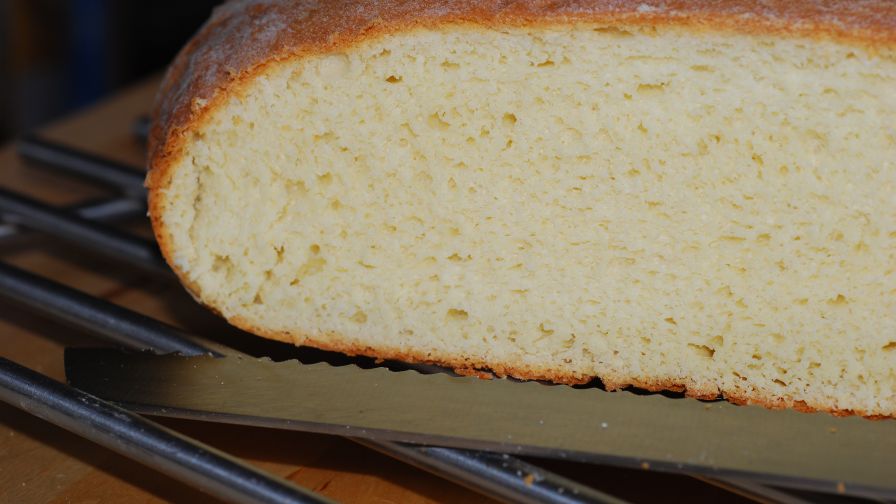The word bread, a Serbian bread, comes from the Italian focaccia, a flat bread. It came into Serbian as early as in the Middle Ages. The word was also accepted in Turkish language from Serbian and is use it today. We can find the various forms of the word in all the Balkan languages, even in Hungarian (pogacsa) and in German (Pogatscherl).
Once pogača used to be only a flat, round bread, made of yeast free dough, baked in the hot hearth ashes. Today the word also covers a type of a cake in the shape of a round bread, made of fine white flour, butter and eggs. A Serbian saying about one “asking for a pogača over the already existing bread” means that one is not content with what is already there.
From the time immemorial, bread and salt have been a symbol of hospitality in Serbs, since it meant that each and every household, even the most destitute one, could provide bread, salt and water to “anyone who happens to come by”. And that is why even today there is a custom to welcome a guest first with bread and salt and then serve other kinds of food, “what God has given and the host has made”. When times are good, the best of breads are made for guests – bread. It is never cut, it is broken.
Hospitality of Serbs goes back to the very early times when it was believed that an unexpected guest may actually be a deity or a spirit of a deceased ancestor, someone of supernatural powers. For that reasons, strangers, anyone who happened to come by were welcome at every house, treated with respect and served as best as possible – just so that they would not be offended. And first of all, there was bread and salt on the table.
Later on, when Christianity came, the tradition of hospitality took over more sincere and charitable shapes. The custom of welcoming and serving the visiting strangers gradually turned into a charitable welcome: if hungry, give him to eat; if persecuted, hide him; if poorly dressed, give him clothes; if wounded, dress his wounds; help the weak, the sick, the persecuted, don’t ask what happened, who he is and where he comes from, but offer hospitality and help, and “God will pay you”.
A model to all the Christian is an event recorded in the Old Testament.
Three strangers came to the home of old and pious Abraham and Sarah. They welcomed them the best they could. It turned out that the strangers were actually God’s angels, promising Abraham and Sarah that they would get a son and that through him Abraham would become the Father of many nations devoted to God. And it all came true. This Biblical event is often represented in icons and frescoes as the Abraham’s and Sarah’s Hospitality. And there is always an image of a bread on the table before the angels.
With time, hospitality became a distinctive feature of the Serbs and they are particularly proud of it. Today Serbs express their hospitality with a special feeling of delight. They still serve their dear and esteemed guests with bread and salt, symbolising a home open to everyone.
Bread also had a ritual meaning. Serbs used to invite guests to a wedding with bread and brandy (or wine) in a wooden canteen (buklija). A woman who has recently given birth do a child is brought a bread as a present, and it is baked for each and every festive occasion. Once in the past, when plague was sweeping the regions, a bread was made for the plague – to make it ‘merciful’.
MODERN BREAD RECIPE:
Ingredients:
flour – 1kg,
salt – ½ tsp,
baking soda – 1 tsp,
1 egg for glazing,
some lukewarm water (as much as necessary)
Method:
Put the flour in a bowl, make a small hole in the middle and put the baking soda and salt in it. Then slowly and gradually pour the lukewarm water, working the dough all the time and then make it as thick as for a regular bread. Put the dough onto a cutting board, knead well and then flatten a bit and shape a round form.
Grease an oven tray and place the dough, pressing it over gently. Use a fork to make small holes and then drag the fork a bit all over its top to make a typical pattern. Now whisk an egg and glaze the dough and put it in the oven at about 2000-2200C. When a golden-brown crust is formed, take it out of the oven and wrap in a large enough clean kitchen towel.
Serve warm with cottage cheese or curded cream. Take it whole, in one piece, before those sitting at the table, give them to break it and eat it, without using a knife.

